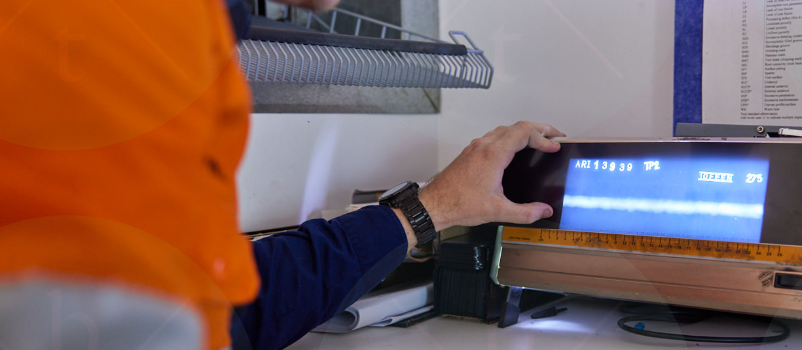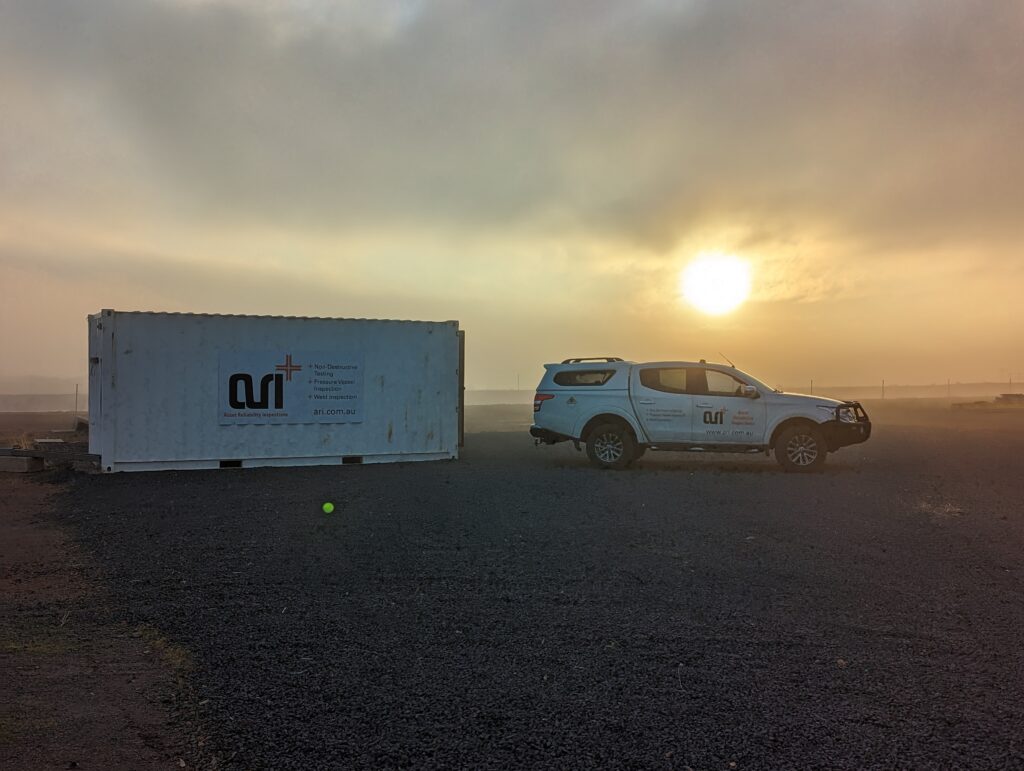

Image: Viewing of Radiographic Film
Radiographic Testing (RT), now sometimes referred to as Conventional Film Radiography since the introduction of Digital Radiography (DRT) is the most common volumetric inspection method. It captures a permanent record of volumetric discontinuities that can be stored and easily communicated to stakeholders.
We can deploy our RT crews to site with all equipment required or we can complete the testing at our Bunbury workshop. For onsite campaigns and shutdowns, we have a portable processing facility so that the processing can be completed onsite and fast results can be provided to welding and fabrication teams.

Image: Mobile RT Dark Room and Office
Internal Defects Visualization: Radiography provides a visual image of internal features, including voids, cracks, and other inhomogeneities.
High Sensitivity: It can detect both surface and subsurface defects, making it suitable for identifying a wide range of flaws.
Permanent Record: The results are a permanent record in the form of radiographic film or digital images, which can be reviewed and analyzed later.
Applicable to a Range of Materials: RT can be used on metals, composites, plastics, and ceramics, making it versatile.
Deep Penetration: X-rays and gamma rays can penetrate various materials and thicknesses, allowing inspection of thick and dense components.
Non-Contact Method: It is a non-contact method, meaning it can be performed without directly touching the test object, which is useful for delicate or hot materials.
Health and Safety Risks: The use of ionizing radiation requires strict safety protocols to protect operators and the public from exposure.
Access to Both Sides: Radiographic testing usually requires access to both sides of the test object.
Time-Consuming: Setting up and taking radiographs, especially in field conditions, can be time-consuming compared to some other NDT methods.
Limited Sensitivity to Some Flaws: RT is less effective for detecting very small surface cracks or defects that lie parallel to the X-ray beam.
Operational Restrictions: Due to safety concerns, radiographic testing often requires the evacuation of nearby personnel, which can disrupt other operations.
Contact us sending a message or give us a call to discover how we can help.

ARI delivers professional services in pressure equipment inspection, weld inspection, and non destructive testing.
Asset Reliability Inspections © 2025 All Rights Reserved
